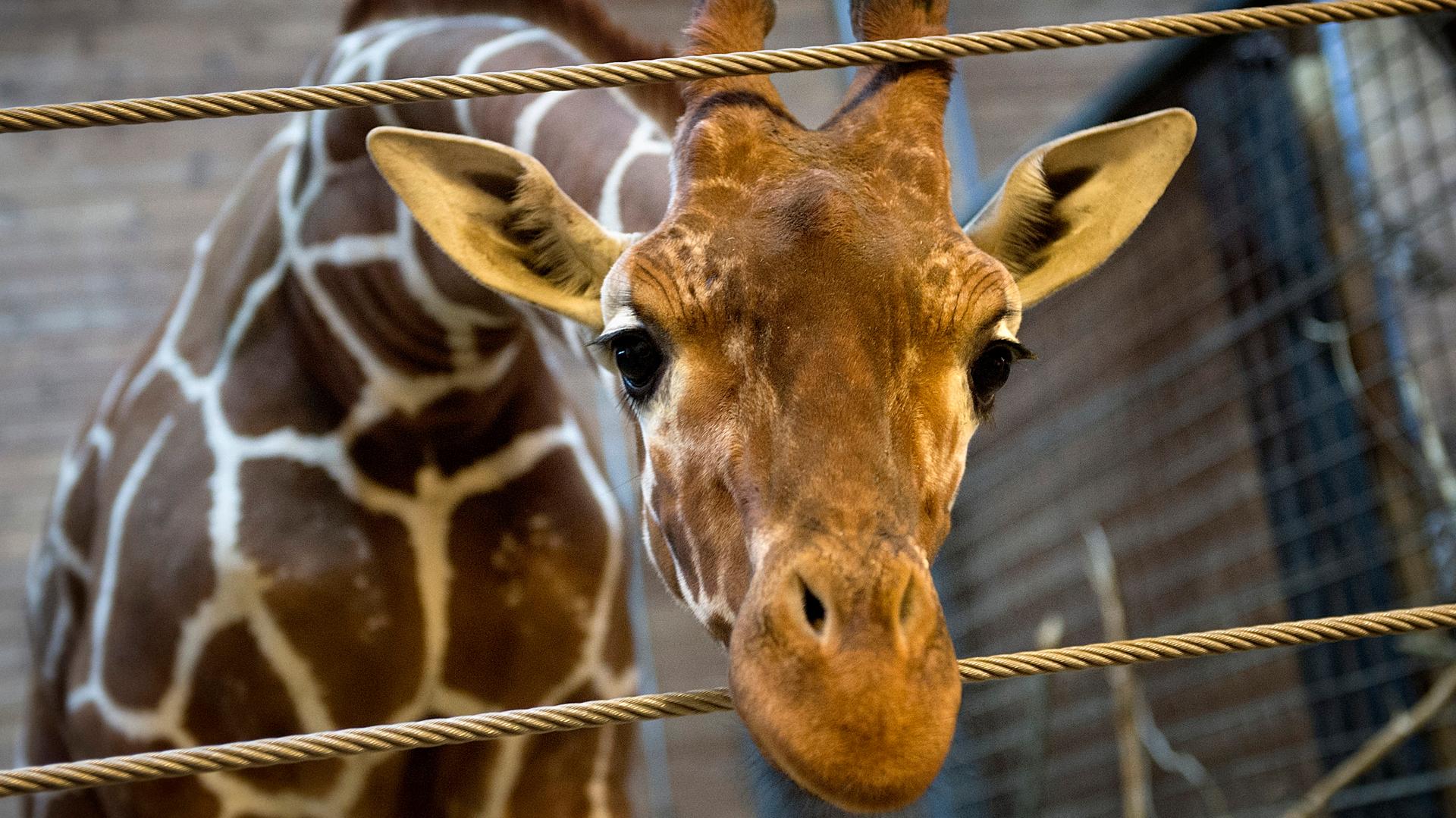Here’s the story of a baby giraffe fed to lions at the Copenhagen Zoo
Marius the giraffe is pictured in Copenhagen Zoo February 7, 2014.
A healthy giraffe at the Copenhagen Zoo was killed by officials and fed to the lions over the weekend, setting off a big debate abroad and on social media.
Visitors, even children, were invited to see officials perform the giraffe's autopsy and watch the big cats eat him for lunch.
Zoo officials said that Marius, an 18-month-old giraffe, was killed beacuse they wanted to avoid inbreeding. One official said the same thing would have happened to an elephant or any other animal if there were too many males with similar genes.
There were petitions circulating online aiming to save Marius's life, with tens of thousands of signatures in support, but the zoo still believed that killing the giraffe was the best course of action.
"There have been small groups of animal lovers — I don't know if that's the right term to use here — but people who have been protesting this because it's a giraffe and it seems inhumane," Kim Bildsoe Lassen, an anchor on Denmark's national television news explained. "While the zoo and its director have said this is part of the program that they run, and it is not different because it's a giraffe that has big brown eyes or whether it's a small animal. They have to deal with it the same way."
A few other zoos offered to take Marius in, but none of the alternative environments were suitable based on the rules of the European Association of Zoos and Aquaria.
While some people have taken to social media with outrage over Marius's death and the way he was killed, others are looking more closely at the zoo's decision and seeing the logic behind it.
Lassen said from the zoo's perspective, "this was an educational thing. And that the most natural thing was to not destroy the meat but to give it to lions or other predators who would eat this in the wild."
Most of the criticism of the decision has come from abroad.
"I think there was a big uproar in the beginning," Lassen said. "And then I think when the zoo explained what was actually the purpose of it, and why it was done, I think most people understood that this was, as you say, a part of life."
We want to hear your feedback so we can keep improving our website, theworld.org. Please fill out this quick survey and let us know your thoughts (your answers will be anonymous). Thanks for your time!
